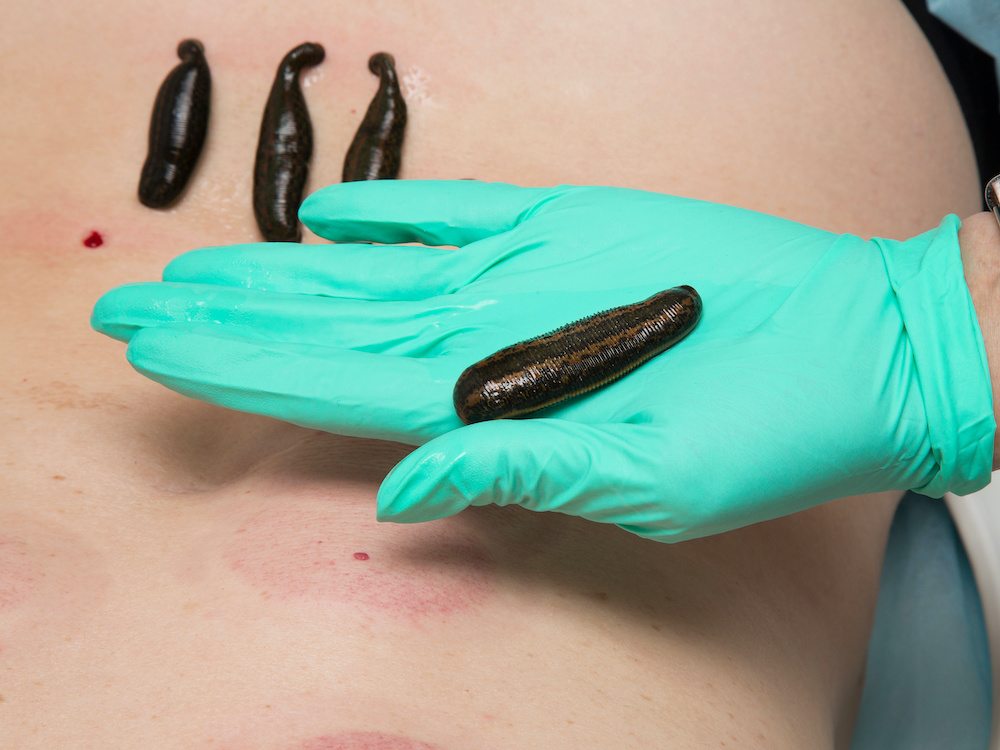A boil is a dermatological condition caused by bacterial infection of the hair follicle. It is standard and can be activated at any age. Boils should not be underestimated; untreated or improperly treated boils can lead to severe complications. A practical yet not very well-known method of combating boils is leech therapy.
A properly diagnosed and appropriately treated boil does not pose a health threat. Therefore, as soon as you notice symptoms of a boil, seek help from a doctor. The specialist will choose the most suitable form of treatment for you. Ask them about leech therapy – what benefits it brings, and whether it is worth using during the treatment of boils. If there are no contraindications, leech therapy can support conventional methods, help deal with the problem faster, and reduce the risk of spreading boils over the entire body.
Boil – what is it?
A small, painful, purulent bump that has formed on the skin is most likely a boil. This term refers to the purulent inflammation of hair follicles and their surroundings, occurring on hairy skin parts. It is used interchangeably with abscess, ulcer, and staphylococcus.
The inflammation is most often caused by Staphylococcus aureus. A significant portion of the population (estimated to be even every third person!) carries this bacteria, but not everyone becomes a source of boil development.
Due to its small size, a boil looks quite inconspicuous and is often underestimated. This is a big mistake that can be costly, as, contrary to what some think, a boil is not just an aesthetic issue. An untreated boil can lead to the development of diseases such as pneumonia, endocarditis, or osteomyelitis, as well as many other conditions that pose a threat to health and life.
Causes of boils
Boils develop due to infection with staph bacteria, usually the previously mentioned Staphylococcus aureus. These bacteria are ubiquitous, and many carry them without knowing it because they do not cause any adverse symptoms. They make themselves known only when immunity drops, then they activate, multiply, and develop.
Factors contributing to the development of boils
Risk factors for the development of boils include:
– Systemic diseases (e.g., diabetes, kidney diseases, liver diseases, cancers),
– Skin diseases (e.g., atopic dermatitis, scabies, eczema),
– Improper hygiene and inappropriate skin care,
– Taking immunosuppressive drugs and antibiotics,
– Poor nutrition,
– Alcohol abuse,
– Obesity.
Symptoms of boils – how and where do boils form?
A boil goes through several stages, during which its appearance changes. Initially, inflammatory infiltration and a small bump with a reddish-purple colour form on the skin around the hair follicle. After a few days, a pustule forms on the bump, underneath which necrosis occurs.
Over time, the pustule breaks open, and the pus contained within it is released outside. Then, the boil begins to heal, sometimes disappearing completely and sometimes leaving a small scar. The entire process, from formation to full healing, lasts several to several days.
Boils typically prefer the face, neck, nape, chest, head, ears, back, and buttocks, less often the limbs and armpits. In addition to the described skin changes, swelling, redness, and pain also appear. A fever, malaise, and tenderness of the lymph nodes nearest to the boil may accompany this.
Boil – when to see a doctor?
Upon noticing symptoms indicative of boil development, you should make an appointment with your primary care physician. The family doctor should advise on how to treat the condition. However, if the changes are severe, numerous, and merging, a visit to a dermatologist is inevitable. Considering the long wait times for specialist appointments, it is still worth consulting your family doctor first about your problem.
Treatment of boils
The treatment approach should be tailored to the number, extent, and severity of changes, as well as the patient’s overall well-being. In most cases, topical treatment using ichthyol, soda compresses, and antibiotic ointments is applied. The wound should be washed with special disinfectants or water with grey soap. Pain-relieving medications are also used.
The treatment of carbuncles is much more complicated. Then, oral or intravenous antibiotic therapy, surgical incision of the boil, and wound cleaning are necessary. Surgical intervention for individual changes is usually optionally because they burst independently.
Leeches for boils
The main goal of treating a boil is to support cleansing, thereby healing the wound and preventing the spread of bacteria, thus avoiding the formation of new changes. Leech therapy shows excellent effects in this regard. Regular application of leeches in 3-4 cycles alleviates.
The pain is associated with boils while supporting and accelerating healing.
The treatment involves applying leeches to the infected area. Between 2 and 8 leeches are applied to the skin, attaching themselves to the skin and releasing therapeutic hirudin into the bloodstream. Leech therapy does not hurt, so there is no need to fear it.
Leeches are not suitable for everyone. Contraindications include, for example, pregnancy, menstruation, or HIV infection, so it is worth consulting the possibility of undergoing leech therapy with your doctor beforehand.
How to prevent the spread of boils?
Boils can not only be contagious but there is also a significant risk that they will spread over the body due to improper handling. Therefore, during treatment, it is worth following a few essential rules:
– Do not cut, squeeze, or scratch boils.
– Do not apply bandages or any dressings to boils.
– Protect boils from irritation.
– Take a break from physical activity for some time.
– Follow proper hygiene rules.
– Use antiseptic agents and care for the diseased area.
– Follow the doctor’s recommendations and take the prescribed medications.

